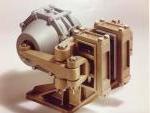 In the 1970's, Kobelt became a pioneer in developing and manufacturing push-pull controls, to replace the cumbersome and complicated wire over pulley control systems in marine vessels. With dozens of control heads, variable handles and multiple functions per head, these controls quickly became a standard in the industry. Kobelt also expanded its pneumatic line by introducing heavy duty shaft brakes to the marine industry and, later, made a bold entry into the oil and gas sector by being the first to introduce air cooled disc brakes for draw-works applications.
In the 1970's, Kobelt became a pioneer in developing and manufacturing push-pull controls, to replace the cumbersome and complicated wire over pulley control systems in marine vessels. With dozens of control heads, variable handles and multiple functions per head, these controls quickly became a standard in the industry. Kobelt also expanded its pneumatic line by introducing heavy duty shaft brakes to the marine industry and, later, made a bold entry into the oil and gas sector by being the first to introduce air cooled disc brakes for draw-works applications.